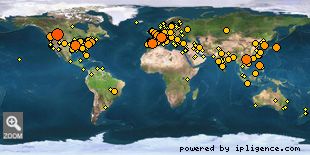 » NMR Jobs
» NMR Jobs |
|
|
|
|
|
|
 » Cool papers
» Cool papers |
|
|
|
|
|
|
 » NMR books
» NMR books |
|
|
|
|
|
|
 » NMR theses
» NMR theses |
|
|
|
|
|
|
 » NMR blogs
» NMR blogs |
|
|
|
|
|
|
 » NMR news
» NMR news |
|
|
|
|
|
|
 » NMR tweets
» NMR tweets |
|
|
|
|
|
|
 » NMR videos
» NMR videos |
|
|
|
|
|
|
 » NMR pictures
» NMR pictures |
|
|
|
|
|
|
 » Online Users: 342
» Online Users: 342 |
| 0 members and 342 guests |
| No Members online |
| Most users ever online was 1,278, 01-09-2024 at 07:38 AM. |
|
 » Welcome!
» Welcome! |
Welcome, NMR world!

Our visitors map.
|

 NMR-identification of the interaction between BRCA1 and the intrinsically disordered monomer of the Myc-associated factor X NMR-identification of the interaction between BRCA1 and the intrinsically disordered monomer of the Myc-associated factor X |
|
Dec 02, 2023 - 1:42 PM - by nmrlearner
|
 NMR-identification of the interaction between BRCA1 and the intrinsically disordered monomer of the Myc-associated factor X
NMR-identification of the interaction between BRCA1 and the intrinsically disordered monomer of the Myc-associated factor X
Abstract
The breast cancer susceptibility 1 (BRCA1) protein plays a pivotal role in modulating the transcriptional activity of the vital intrinsically disordered transcription factor MYC. In this regard, mutations of BRCA1 and interruption of its regulatory activity are related to hereditary breast and ovarian cancer (HBOC). Interestingly, so far, MYC's main dimerization partner MAX (MYC-associated factor X) has not been found to bind BRCA1 despite a high sequence similarity between both oncoproteins. Herein, we show that a potential reason for this discrepancy is the heterogeneous conformational space of MAX, which encloses a well-documented folded coiled-coil homodimer as well as a less common intrinsically disordered monomer state – contrary to MYC, which exists mostly as intrinsically disordered protein in the absence of any binding partner. We show that when the intrinsically disordered state of MAX is artificially overpopulated, the binding of MAX to BRCA1 can readily be observed. We characterize this interaction by nuclear magnetic resonance (NMR) spectroscopy chemical shift and relaxation measurements, complemented with ITC and SAXS data. Our results suggest that BRCA1 directly binds the MAX monomer to form a disordered complex. Though probed herein under biomimetic in-vitro conditions, this finding can potentially stimulate new perspectives on the regulatory network around BRCA1 and its involvement in MYC:MAX regulation.
This article is protected by copyright. All rights reserved.
... [Read More]
|

 0 Replies | 243 Views
0 Replies | 243 Views
|
|
 » BioNMR wiki
» BioNMR wiki |
|
|
|
|
|
|
 » NMR discussion
» NMR discussion |
|
|
|
|
|
|
 » NMR conferences
» NMR conferences |
|
|
|
|
|
|
 » NMR software
» NMR software |
|
|
|
|
|
|
 » Pulse sequences
» Pulse sequences |
|
|
|
|
|
|
 » NMR community
» NMR community |
|
|
|
|
|
|
 » NMR presentations
» NMR presentations |
|
|
 » NMR web resources
» NMR web resources |
|
|
|
|
|
|
 » NMR feature requests
» NMR feature requests |
|
|
 » NMR bookmarks
» NMR bookmarks |
|
|
|
|
|
|
 » Stats
» Stats |
Members: 3,202
Threads: 25,754
Posts: 26,140
Top Poster: nmrlearner (23,198)
|
| Welcome to our newest member, bpadmanabhan |
|



